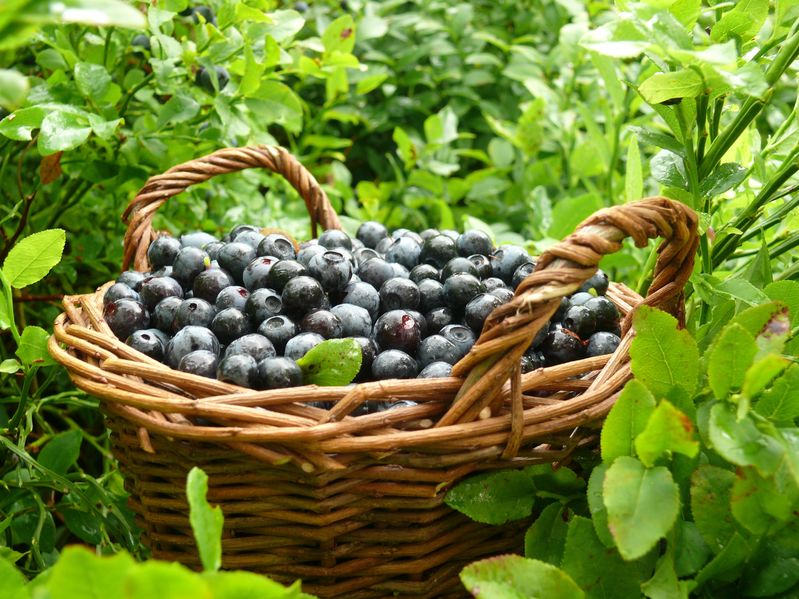Blueberries are one of the easier crops to grow in your garden or allotment and can reward you with a delicious crop. The cost of blueberries in the supermarkets makes the crop all the more welcome in our gardens. They are also a plant for all seasons, providing flowers, then fruit and then stunning autumn foliage colour. Container grown plants are best and are better planted in autumn or spring.
Method
Blueberries require an acid soil. If you don’t know what kind of soil you have you can purchase a cheap soil testing kit, but you can usually tell if you have an acid soil as plants such as Rhododendrons, Azaleas and Camellias will grow well in the surrounding gardens. But don’t worry if you have a more alkaline soil. All is not lost. You can easily grow blueberries in deep containers in an ericaceous (acidic) compost. Ideally you should also water with rain water as hard tap water will make the compost more alkaline in the long run. Water regularly in summer. Feed the plants in spring.
Protect fruiting plants with netting or a fruit cage to avoid the birds eating all your eagerly awaited crop. Only pick fruit when they begin to soften. Not all of the crop will ripen at the same time. You may have to make several harvests. Different varieties produce fruit at different times. There are early, mid season and late croppers. Ideally plant some of each to provide a season-long supply.
Although temperatures are not usually a problem, blueberries do prefer a sunny site that is sheltered from strong winds. Depending on the variety, blueberries can reach around 150cm (5ft) in height. They will also need a spacing of around 150cm (5ft) to allow room for growth and allow air circulation.
Pruning
To maintain productivity, your plants will need pruning each February/March when they are in their winter dormancy. This is not a difficult process once you have become familiar with the method. You want the plants to have young red stems and plenty of fruiting buds. The two-year-old growth is the growth that will produce the best crop. The fruiting buds are much larger and rounder than the more pointed vegetative buds, so it is the stems with the most fruiting buds which you are looking to keep.
Each year cut back the very oldest stems to ground level. This will help to rejuvenate the plant and encourage new stems to form. Create an open framework by also removing any dead or damaged stems and any low, horizontal stems.
To view a selection of blueberry plants at Thompson & Morgan click here
Mark Snelling
Images copyright Gardenforpleasure.co.uk
If you have enjoyed reading our blog post then why not fill in the form provided to allow us to send you our blog posts and newsletters by email.

